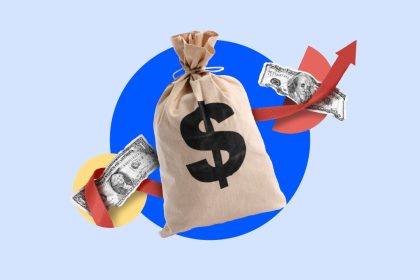If you’ve considered sending your child to a private K-12 institution and have gotten immediate sticker-shock, you’re not alone. In 2023, the average tuition cost for a private school K-12 education comes out to $441,207, with $23,839 being the average annual cost.
For those with their sights set on a private education for their child who don’t have that kind of money on hand, there are financial resources and tools that can be used to fill financing gaps, like personal loans.
However, due to inflation and record-breaking interest rates, you could be asking yourself if a personal loan is the best option to pay for the year’s tuition in one lump sum. The answer? It depends on your credit situation and the school’s financial aid offerings.
Are there loans specifically for private school?
Given that it’s back-to-school season, I did some digging into the private schools near me and contacted financial aid offices to get a deeper scope into cost to see what kind of financial aid is offered.
As a former student loans reporter, what I found was surprising. While most of them boast tuition costs higher than the cost of a semester of my college education, there doesn’t seem to be a universal financing option for K-12 like there is for private college students.
Unlike college, private K-12 education isn’t financeable through federal or private student loans. Rather, financial aid can be offered through state grants or through each school’s financial aid office. These funds are typically donor-based and offered to those who qualify. Others may offer payment plans or reduced tuition programs, although those options are also dependent on the school.
While these options may help initially, if the financial aid falls short or you find yourself needing an extra boost to make the monthly payments, then it may be necessary to look into financing the remaining costs.
Can I use a personal loan to pay for private school?
In short, yes. You can use a personal loan to finance a private school education; however, it depends on the lender. While some offer loans specifically for a K-12 education — like LightStream — some have stipulations on what borrowers can spend their loan balance on. While it’s unlikely for most, some may not allow the funds to be used for education costs in general — including K-12.
Before applying, check the lender’s terms and conditions page on the website to make sure the loan can be used for education-related expenses. You can also call the customer service department to confirm. Some lenders prohibit personal loan use for private collegiate-related costs, so it’s best to clarify that this doesn’t apply to all private education before applying.
Is it a good time to take out a personal loan to pay for school?
For those who are still awaiting the first day of school, it can be a scramble for parents as they prepare for the year ahead — particularly those enrolling their child (or children) in private school. While the application process, financial aid discussions and disbursements typically occur well before the end of summer, there are situations in which a last-minute financial resource is necessary.
For example, a personal loan may be a good option if there’s a last-minute opening in your child’s school and they’re first on the waiting list. However, if at all possible, it may be best to look into every alternative available due to the current high interest rates. You may also be able to get a lower rate if you have an excellent credit score.
Personal loan interest rates hit all-time high
According to a Bankrate study, personal loan rates are sitting at an average of 12.18 percent as of April 10, 2024.
As an attempt to cool swelling inflation, the Federal Reserve hiked the federal funds rate multiple times throughout 2022 and 2023. This made it more expensive for financial institutions to lend, leading to higher rates for borrowers. However, observers believe the Federal Reserve will begin lowering rates in 2024.
Your creditworthiness — your score, credit history and previous repayment behaviors — determines the rate you qualify for. While it will likely still be higher than if you were to apply for a personal loan when rates eventually do fall, those with a better credit score will receive the most competitive rates.
When to take out a personal loan for school
Once you’ve exhausted all of your scholarship and grant options, then you’ll want to consider financing your child’s education. Before turning to a loan, look into a 0 percent APR credit card, which offers an introductory 0 percent interest period, typically for around 12 to 18 months.
However, this is only a good idea if you can feasibly pay off the entire balance within the 0 percent period. Otherwise, you’ll end up paying a much higher interest rate than you likely would with a loan.
If you’ve decided to go the route of a loan, prequalify with as many personal loan lenders as possible before applying. Prequalifying allows you to check your predicted rate before applying with no impact to your credit score. From there, you can more easily compare lenders to find the one that meets your needs and offers the best rate.
Personal loans are disbursed in a lump-sum amount typically within a week, so make sure to coordinate with the school’s financial aid office if this timeline falls outside of the payment window.
Alternative ways to pay for private school
While a personal loan is a good last-resort option, it shouldn’t be the first consideration when paying for private school. Thankfully, there are plenty of options at your disposal before taking on more debt.
- Financial aid: Some schools offer financial aid based on a family’s income compared to the yearly tuition costs, assets or even emergency or extenuating expenses, such as medical costs. While every school will differ in offerings and programs, it’s best to apply as early as possible as most schools likely operate on a “first come, first served” basis.
- 529 plan: While a 529 plan is aimed at funding your child’s post-secondary education, you may still be able to use it for a K-12 education. However, this varies from state to state. If you use a 529 on K-12 and your state doesn’t allow it, you’ll have to repay any state tax deductions you filed with the plan.
- Scholarships and grants: There are private school scholarships and grants for K-12 at the state, local and non-profit levels. There may even be some scholarships available within the school’s financial aid office, although these will likely be offered on a ‘first come, first serve’ basis.
- Payment plans: Many private schools offer payment plans that break up the cost of tuition into multiple installments versus one to two larger payments. Be aware that sometimes these may be offered through third-party companies and some may charge extra fees, so comb through the terms and conditions before signing on to a payment plan.
Read the full article here
 Trending:
Trending:















